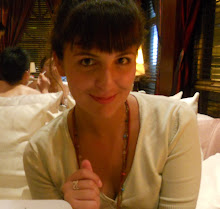In a world of MP3’s, Smartphones, and Ke$ha, Savannah is passionate about an ecclesiastical keyboard instrument that dates back to the 8th century. Savannah Sommers is a radiant, young college student with a warm, welcoming personality. But yeah, she’s also an organist.
I must admit, that I was curious about how this came to be. But after speaking with Savannah, and after getting a closer look at the organ, I think I understand. I hope you will too! Great interview, awesome video. Please take a look.
Interview
Tashina: What makes an organ different from a piano?
Savannah: Alright, well the only thing that is similar between the two, is the keys—how there’s black and white keys. And that’s pretty much the only similarity. And other than that, pianos have strings that the hammers strike, and they vibrate, and that’s where the sound comes from. But organs have pipes that are opened (depending on what keys you push) and the sound comes from the pipes.
Pianos only have one keyboard, right? But I’ve seen organs with up to 5 different keyboards, and they’re called manuals when you’re talking about organ.
Let’s see, the organs have a volume-control pedal, and it’s called the swell box, and when you push it, it makes it louder. Whereas the piano doesn’t have a volume control, other than just hitting the keys harder or softer, depending on how loud you want it.
The piano has a damper pedal, to allow the notes to sustain longer—for the strings to vibrate longer. But organs, the sound will sustain as long as you’re holding the key down, it never dies away.
Pianos aren’t capable of any other sound, besides just the sound of the strings. But organs have stops that you open, that control different sounds and different pipes. And they can sound like the trumpet, they can sound like the flute, a combination of the two, they can sound like bells—that’s a fun one to use. It can sound like really high-pitched and shrill, or just like really soft and mellow. It’s really cool how you can control all the sounds.
And for playing piano, you don’t have to wear any special kind of clothing. But you do have to wear special shoes for organs. They have a little heel on them, and they’re for playing the pedals.
And then, of course, there are foot pedals on the organ, they [foot pedals] just look like a keyboard, only it’s bigger and down by your feet.
Tashina: What made you decide to start playing on the organ?
Savannah: Well, it’s really useful for me, just because I get asked to play at church all the time, so church is a good place. But also, I wanted to be able to play another instrument besides piano—which has been my main instrument my whole life. And my piano teacher could teach me organ too, so that worked out really well. I just really wanted to play it!
Tashina: What was it like going from piano to organ?
Savannah: Organ is a lot trickier than piano. Like, it makes you think a lot more, because your feet are doing completely separate things from your hands. And you’re thinking about what sounds you want it to do—like you have to change stops for certain sections of certain pieces and, I don’t know, it just requires a lot of brain power, a lot of thinking.
Tashina: There are pipe organs, and electric organs, and hybrids of the two; what type of organ do you use most frequently?
Savannah: Well I practice here [at the Church of Jesus Christ of Latter-day Saints], and this is a hybrid. It’s pipe, but it’s electric, which means basically it doesn’t require any pumping to get the sound out. So this is the hybrid, and this is the one that I play on the most.
Tashina: In modern-day America, where can people see performances that include organ, besides in sacred services?
Savannah: Yeah, organ is not really that popular to have in a recital, which is sad because I think that it’s really cool. But um, I did find out that you can go up to Salt Lake and at the Tabernacle, they have daily concerts, like just like organ concerts every day.





0 comments:
Post a Comment